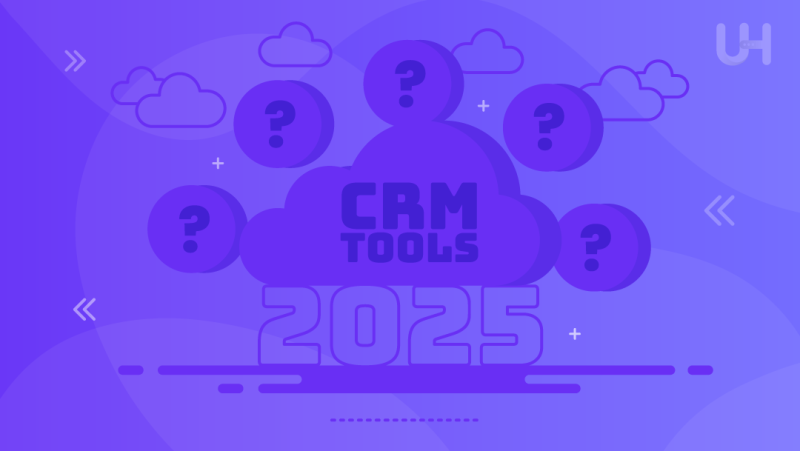Databases are the foundation for training all types of machine learning and artificial intelligence (AI) models. Over the past two decades, there has been an explosion of commercially available datasets, making it much more difficult to choose the right dataset for your task. At the same time, the growing number of datasets means you can find the perfect fit for whatever application you’re working on.
Here is a list of 10 best databases for machine learning & AI:
1. MySQL
Backed by Oracle, MySQL is one of the most popular databases on the market. Created in 1995, it has remained one of the leading open-source relational database management systems (RDBMS) used by major companies like Facebook, Twitter, Uber, and Youtube.
What accounts for its popularity? First, MySQL offers flexible, free enterprise-grade gestures and community licenses. It also has an upgraded commercial license and focuses on robustness and stability.
Here are some of the key advantages of MySQL:
- Data security layers to protect sensitive data.
- Scalability when dealing with large amounts of data.
- Open source RDBMS with two distinct licensing models.
- Multi-master ACID transactions via MySQL Cluster.
- Supports both structured data (SQL) and semi-structured data (JSON).
2. Apache cassandra
Another leading AI and machine learning database is Apache Cassandra, an open-source and highly scalable NoSQL database management system. Apache Cassandra is designed to process massive amounts of data extremely quickly. The database is also used by big names like Instagram, Netflix, and Reddit.
Here are some of the key advantages of Apache Cassandra:
- Handling huge amounts of data.
- One of the most scalable databases with automatic sharding.
- Provides linear horizontal scaling.
- Decentralized database with multi-datacenter replication and automatic replication.
- Fault tolerance by automatically replicating data to multiple nodes.
3. PostgreSQL
PostgreSQL is one of the leading open source object-relational database systems. It extends the SQL language and combines it with a variety of features to scale and securely store complex data workloads. PostgreSQL is especially useful for developers who want to build applications or administrators who want to protect data integrity. It also helps create fault-tolerant environments.
Here are some of the key advantages of PostgreSQL:
- High security with powerful access control system.
- Provides ACID transaction guarantees.
- The Citus Data PostgreSQL extension provides distributed SQL features.
- Advanced indexes like Partial Indexes and Bloom Filters.
- Supports structured data (SQL), semi-structured data (JSON, XML), key-value, and spatial data.
4. BlazeSQL
BlazeSQL is an AI-driven tool designed to turn natural language queries into actionable SQL insights. It simplifies data analysis by automatically generating SQL queries, allowing teams to quickly extract and visualize data from their databases without requiring in-depth SQL knowledge.
BlazeSQL supports multiple SQL databases, including MySQL, PostgreSQL, Microsoft SQL Server, Snowflake, BigQuery, and Redshift, among others. It offers both cloud and desktop versions, ensuring data privacy and security by keeping all database interactions local to your device.
Here are some of the key advantages of BlazeSQL:
- Generate SQL without code : Convert text prompts into SQL queries instantly, reducing the need for manual query writing and debugging.
- Local and Private : The desktop version ensures your data is secure, with all operations performed locally.
- AI-powered insights : Blaze learns about your database, remembers important details, and improves query generation over time.
- Supports complex queries : Capable of creating complex SQL queries, suitable for both simple and advanced data analysis tasks.
- Customizable documentation : Allows you to document your database schema, helping AI better understand and interact with your data.
BlazeSQL is trusted by leading companies like Amazon, Visa, and eBay for its ability to streamline data analysis and empower teams to make informed decisions quickly.
5. Sofa base
Couchbase is an open source, distributed, document-centric interactive database. The server delivers great performance in any cloud and supports applications through its various capabilities such as workload isolation, memory-first architecture, and geo-distributed deployment. It can maintain 99,999 availability and sub-millisecond latency.
One of the key advantages of Couchbase is that the Couchbase Data Platform provides simple and powerful application development APIs across a variety of programming languages, connectors, and tools. This makes it easy to build applications while accelerating time to market.
Here are some of the key advantages of Couchbase:
- Includes Big Data integration and built-in SQL to enable users to leverage processing, tools, and data.
- Supports all cloud platforms.
- Memory-first architecture enables fast and consistent experiences at scale.
- Providing security across the stack.
6. Elasticsearch
Another top database choice, Elasticsearch is built on Apache Lucene. It is an open-source, distributed search and analytics engine that supports all types of data, such as numeric, text, geospatial, structured, and unstructured.
Elasticsearch belongs to the Elastic Stack, which includes various open source tools for data enrichment, ingestion, storage, visualization, and analysis.
Here are some of the key advantages of Elasticsearch:
- Many built-in features like data rollup and index lifecycle management for storing and searching data.
- Extremely efficient at full text searching.
- Useful for infrastructure monitoring, security analysis, and other security related tasks.
- Horizontal scaling through automatic sharding.
- Part of the larger Elastic Stack that includes Elasticsearch, Kibana, Logstash, and Beats.
7. Redis
Redis is one of the most popular choices in the market. It is an open-source, in-memory data structure used as a database, message broker, and cache. One of the key features of Redis that attracts customers is its support for different data structures like strings, sorted sets, bitmaps, geospatial indexes, hyper logs, etc. Redis also has Lua scripting, LRU eviction, built-in replication, transactions, and different levels of on-disk persistence.
Here are some of the key advantages of Redis:
- Automatic failover process.
- Redis-ML, is a module that implements various machine learning models as built-in Redis data types.
- Many data structures like strings, lists, sets, hashes, bitmaps, streams, etc.
- Makes it easy to write complex code with fewer lines and simpler.
8. Generator
A fully managed, multi-region database, Amazon DynamoDB features built-in security, in-memory caching, backup, and restore. Its popularity can be seen in the number of large companies using it, such as AirBnB, Toyota, and Samsung. It implements encryption at rest to reduce the complexity often required to protect sensitive data.
Two of the main benefits of DynamoDB are scalability and data replication. With unlimited virtual memory, you can store unlimited amounts of data based on your individual needs. When it comes to data items, they are all stored on SSDs. Replication is managed locally across different availability zones within a region, but it can also be provisioned across multiple regions.
Here are some of the key advantages of DynamoDB:
- Scale horizontally by extending a table across multiple servers.
- High security with customizable traffic filtering, automated regulatory compliance, comprehensive database threat detection, and more.
- A fully managed service requires no hardware or software provisioning, software patching, distributed database clusters, or setup and configuration.
9. MDB
Machine Learning Database, or MDB, is an open source system for solving big data machine learning tasks. It can be used to collect and store data for training machine learning models or to deploy real-time predictive endpoints. MLDB is one of the easier datasets to use, as it provides a comprehensive implementation of the SQL SELECT statement. This means that it treats datasets as tables, making it easier for data analysts who are already proficient in existing Relational Database Management Systems (RDBMS) to learn and use.
Here are some of the key advantages of MDB:
- Use SQL as a mechanism to query data stored in a database.
- The training, modeling, and exploration processes in MDBs are very processing-intensive.
- Supports vertical expansion with higher efficiency.
10. Microsoft SQL Server
Microsoft SQL Server is a relational database management system (RDBMS) written in C and C++. It is particularly useful for extracting insights from all types of data by querying relational, non-relational, structured, and unstructured data. It has been the most popular mid-range commercial database in Windows Systems for the past 30 years and is currently one of the leading commercial database systems.
Here are some of the key advantages of Microsoft SQL Server:
- Provides ACID transaction guarantees.
- Supports server-side scripting via T-SQL, R, Python, Java, and .NET languages.
- Multi-model database supports structured, semi-structured, and spatial data.
Bonus: MongoDB
The last database on our list is MongoDB, which was released as the first document database in 2009. It was designed specifically to handle document data and has improved dramatically over the years. MongoDB is now the leading document database and NoSQL database on the market. It provides a solution to the challenges of storing semi-structured data in a database.


